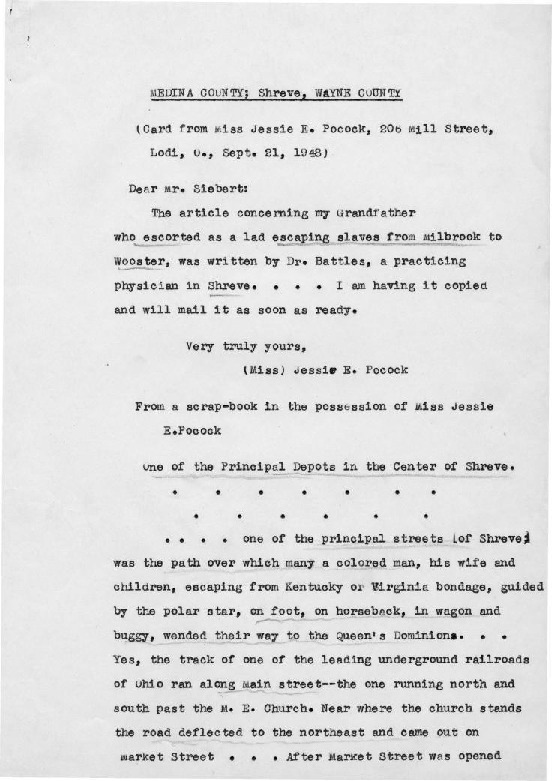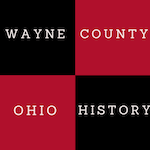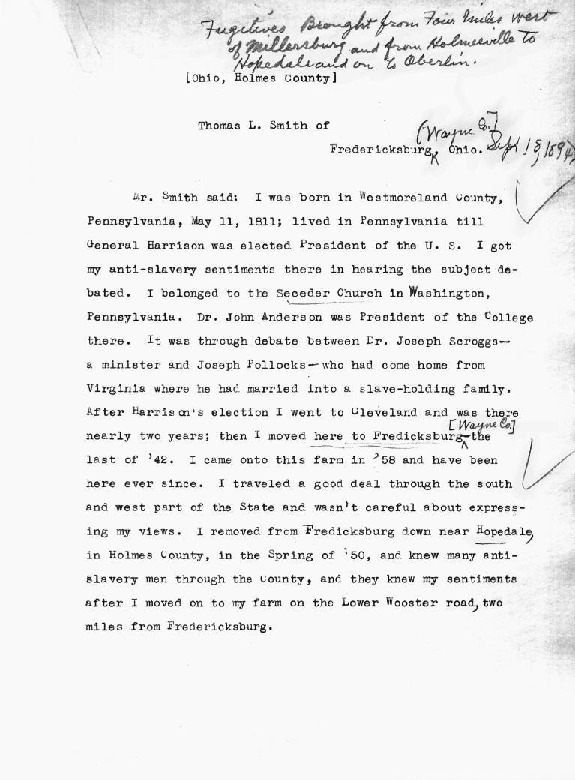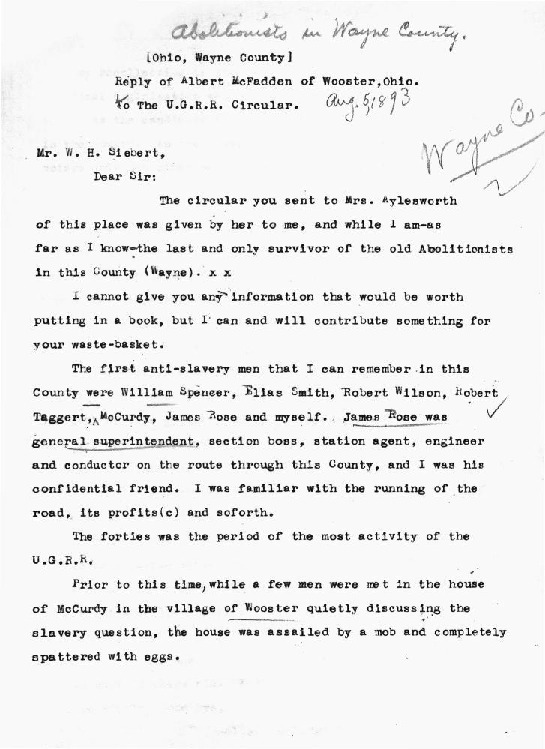Wilbur Siebert Items
This interview of Thomas L. Smith, a man who moved about Ohio and Pennsylvania quite a bit during the mid-nineteenth century, taken by Wilbur Siebert, an Underground Railroad historian residing in Columbus, Ohio, discuss Smith’s knowledge and interactions with the Underground Railroad in and around Wayne County. Smith discusses where he got his anti-slavery ideals and how he spread these ideals around Wayne County. The importance of Wayne County was undeniable because it was a major stop for many slaves seeking freedom as they were on their way to Oberlin, Ohio, a major hub for the freed slaves coming from the South looking for safety.
Smith and other like him that helped fugitive slaves to safety, worked in dangerous conditions, with punishments ranging from $1,000 fines and imprisonment. However, the danger that Smith and others like him faced was minimal compared to that fate of a run-away slave if caught. Slaves were attempting to escape with little knowledge of the area they were going to and no sense of direction. They could never be completely sure if they were safe because of the Fugitive Slave Act. In addition, if they were caught and sent back to the plantations they came from, they would face harsh punishments and beatings. The Underground Railroad helped to free thousands of slaves with the help of free Northern citizens such as Thomas Smith.
Use Ohio Social Studies Standard for Grade Eight 11 (Disputes over the nature of federalism, complicated by economic developments in the United States, resulted in sectional issues, including slavery, which led to the American Civil War) and 16 (Cultural biases, stereotypes and prejudices had social, political and economic consequences for minority groups and the population as a whole) for integration into the classroom.
This letter written by Albert McFadden, one of the first abolitionists in Wayne County and a close informant of the head of the Underground Railroad in Wayne County, to Wilbur Siebert, an Underground Railroad historian based in Columbus, Ohio, discusses McFadden’s knowledge of the Underground Railroad in Wayne County. The letter details the individuals that were crucial to the beginning of the Underground Railroad in Wayne County. McFadden describes his experiences with others—particularly politicians—as he was attempting to get Wayne County to be a more open area for fugitive slaves.
McFadden and others who were present during the beginning of Wayne County’s anti-slavery movement were integral to the success of the Underground Railroad and freeing enslaved people. They spoke out against a topic that had been taken as the norm for over a century and was a part of the United States Constitution. In the end, citizens of the North like McFadden were a driving force behind the end of slavery.
Use Ohio Social Studies Standard for Grade Eight 11 (Disputes over the nature of federalism, complicated by economic developments in the United States, resulted in sectional issues, including slavery, which led to the American Civil War) and 16 (Cultural biases, stereotypes and prejudices had social, political and economic consequences for minority groups and the population as a whole) for integration into the classroom.

Two letters written by Jessie Pocock to Wilbur Siebert on September 21st, 1948 and October 20th, 1948.
This letter written by Jessie E Pocock, a resident of Lodi, Ohio during the mid-1900s and granddaughter of a prominent abolitionist and Underground Railroad helper in Wayne County, wrote this letter to Wilbur Siebert, an Underground Railroad historian based in Columbus, Ohio, that included the story of a fugitive slave family that was attempting to find safety with Pocock’s grandfather. Pocock describes in detail how the abolitionist of Wooster, and the surrounding areas, were able to keep the family of eight safe from detection for over a day until they could get them into a wagon to get them to Wooster where there were larger and safer houses on the path of the Underground Railroad to get the fugitive family to freedom.
The necessity of people such as Jessie Pocock’s grandfather were undeniable during the Underground Railroad. They not only realized the dangers that fugitive slaves were in as they attempted to escape, but they were also willing to put their livelihood on the line to make sure that this family made it some place safe and did not have to worry about being captured on route to a safer and free place for fugitive slaves.
Use Ohio Social Studies Standard for Grade Eight 11 (Disputes over the nature of federalism, complicated by economic developments in the United States, resulted in sectional issues, including slavery, which led to the American Civil War) and 16 (Cultural biases, stereotypes and prejudices had social, political and economic consequences for minority groups and the population as a whole) for integration into the classroom.


